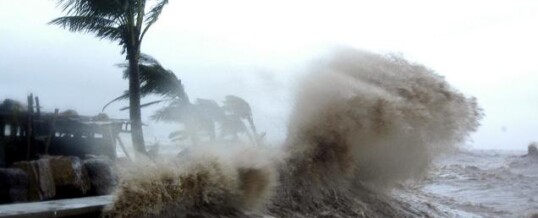
November 29, 2013
When disasters strike, Canadians respond generously. At no time has this been more evident than during large calamities such as the Asian Tsunami in 2004 and the Haiti Earthquake of 2010.
But it may come as a surprise to learn that Canadians, on average, are considerably less generous than the citizens of some other countries. The current response to Typhoon Haiyan in the Philippines provides an interesting example. In the 10 days that followed the typhoon, individual Canadians donated approximately $20 million for relief efforts, or about $0.57 per capita. In the same period, British people donated $74 million, or $1.17 per capita, and Dutch citizens donated $35 million, or $2.12 per capita. The Germans and Swiss were also more generous.
Arguably, Canada has stronger ties with the Philippines than any of the countries mentioned. Over 600,000 Canadians are of Filipino descent and the Philippines are Canada’s single largest source of immigration. So why the low relative generosity from Canadians?
Here’s a thought: The issue may not be the generosity of Canadians, but a fundamental problem with how humanitarian organizations appeal for donations in Canada. In a word, the problem may be competition, which has other negative side effects as well.
To finance their important life-saving work, Canadian relief organizations, large and small, compete for donations from Canadians. This competitive behaviour is problematic for two reasons. First, it duplicates costs, with each group spending more on fundraising to secure maximum visibility. They use costly public relations campaigns and advertising. At this very moment, top humanitarian groups are outbidding each other on Google Adwords so they can be the first to appear in Philippines-related searches. Certainly, advertising agencies welcome the competition-driven business, but their revenues are—to put it simply—diverted from those who need it most. Second, competition confuses the donation process for the large majority of Canadians who do not know where to give or how one aid group differs from another.
Is organizational self-interest in maximizing brand visibility preventing the kind of generosity seen in other countries?
A major difference between Canada and the countries mentioned above is that humanitarian organizations in those countries unite to run joint fundraising campaigns in times of major humanitarian crises. By working together, they mobilize their national media and broadcasters to raise awareness and engage private sector support, making it easier for the public to give. For example, the post office reduces postage costs for mailing donations, telephone companies take donations in their call centres or by text message, and banks accept donations through ATMs. None of that is happening in Canada, which makes it very difficult for phone companies, banks and other potentially supportive companies to favour one aid group over another.
The result is that Canada has no reliable large-scale mechanism for mobilizing resources in support of global relief efforts.
Despite the challenges, five of Canada’s leading humanitarian agencies have chosen to heed the lessons from countries like the UK and the Netherlands, favouring joint efforts over fierce competition during disasters. Together, CARE Canada, Oxfam Canada, Oxfam-Québec, Plan Canada and Save the Children Canada have formed the Humanitarian Coalition and now offer Canada’s only collaboration for disaster response. Their list of private sector partners is growing. The five organizations can reassure donors that they are not trying to outbid each other on Google for Philippines typhoon donations.
But some of Canada’s major relief agencies have refused to join, no doubt because now, instead of these five competitors, they have only one, the Coalition. The likely calculation is that they can do better outside than inside. Perhaps. But there are losers: the disaster victims that have been sacrificed to advertising costs, and individual Canadian donors who—in the face of competing claims—sit on their wallets.
The Humanitarian Coalition needs other humanitarian agencies to join if Canada is to achieve the success now evident in other countries.
Canadians who are interested, can examine evaluations of what joint efforts can achieve at http://humanitariancoalition.ca/. And they should ask why some humanitarian agencies seem to put their own brand ahead of a collective maximization of resources for disaster survivors, and ahead of the joint efforts and joint public evaluations that only a coalition can achieve.
